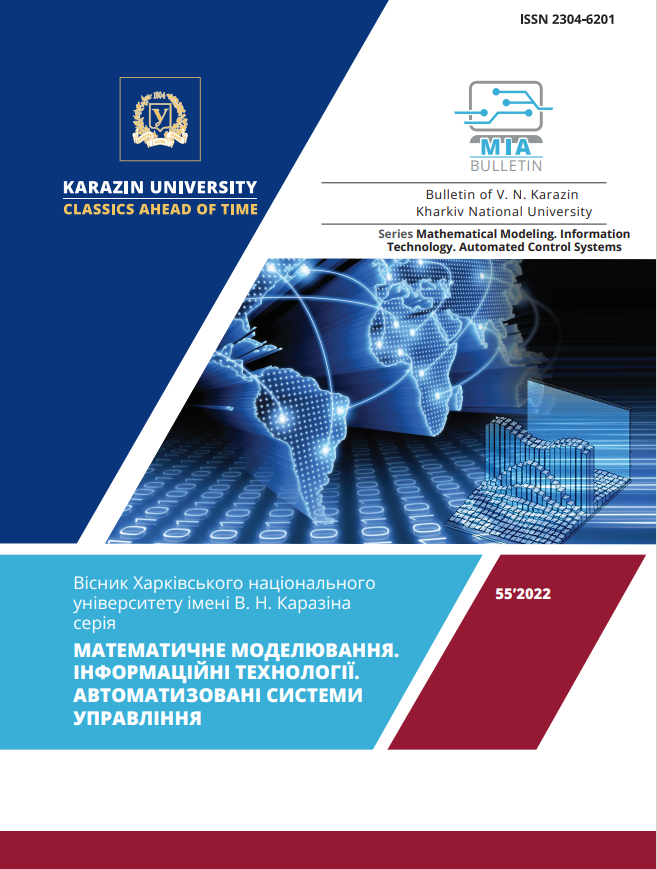Analysis and forecasting of computer network characteristics
Abstract
Today most applications and devices interact with the data networks, so it is important to develop and improve technologies and methods to better understand, control, manage or predict the behavior and state of computer networks and their characteristics. Therefore, the tasks related to the development of models and methods for evaluating and forecasting computer network traffic parameters are important for computer network management. The paper considers the traffic of computer networks in terms of the time series. Trend models of the time series, trend detection criteria and assessment methods are reviewed and analyzed. The selected method for evaluating the traffic trend is based on the Mann-Kendall test, and the consensus method has been used to interpret the results. The task of forecasting computer network traffic taking into account trend indicators also has been considered. This problem has been successfully solved by using a forecasting model based on a moving average, and improved by using gradient boosting. A separate task was to collect and pre-process set of input data describing the operation of a computer network, to formalize it and perform subsequent quantitative and qualitative analysis. A unique data set has been created by parsing logs (system files) from monitoring the state of computer network traffic. It is this set of data that has been used to create a trend detection model and further forecast the characteristics of the computer network. The obtained results shows that the developed models and methods can be used on practice solving problems of monitoring and managing computer networks.
Downloads
References
/References
Gray K. L. Comparison of Trend Detection Methods. Graduate Student Theses, Dissertations & Professional Papers. 2007. 228 p.
IBM Corporation Documentation. Trend detection. 2021. URL: https://www.ibm.com/docs/en/siffs/2.0.3?topic=learning-trend-detection
Andriienko V.M., Arsiriy Y.A. Intelligence analysis of time series with stochastic trend. East-European Journal of Advanced Technology. 2011. № 4/4 (52). P. 4-8.
Kovtun N.V. Theory of Statistics: Course of lectures, practice. Kyiv: ImeksLTD, 2007. 276 с.
Baklan I.V., Stepankova H.A. Probabilistic models for time series analysis and forecasting. Artificial intelligence. 2008. № 3. P. 505-515.
Romanchuk V.I., Lavriv O.A., Chervenets V.V., Bak R.I. Study of probabilistic properties of corporate multiservice network traffic. Radio electronics and Telecommunications : [collection of scientific papers] / editor B.A. Mandziy. Lviv : Publishing house of Lviv Polytechnic. 2011. P. 128-134.
Robert Nau. Statistical Forecasting: notes on regression and time-series analysis. ARIMA Models for time-series forecasting. 2020.
Rylova N., Oksanych I. ARIMA-models synthesis for forecasting the yield factors of conditioned semiconductor materials. Information Processing Systems. 2015. Vol. 5 (130). P. 102-107.
Real World Networking datasets. URL: https://gist.github.com/stefanbschneider/96602bb3c8b256b90058d59f337a0e59.
Dekel Shai, Oren Elisha, Ohad Morgan. Wavelet Decomposition of Gradient Boosting. CoRR abs/1805.02642. 2018. P. 1-13.
Yanru Zhang, Ali Haghani. A gradient boosting method to improve travel time prediction. Transportation Research Part C: Emerging Technologies. 2015. Vol. 5, Part B. P. 308-324. Doi: https://doi.org/10/1016/j.tr.2015.02.019.
Gray K. L. Comparison of Trend Detection Methods. Graduate Student Theses, Dissertations & Professional Papers. 2007. 228 p.
IBM Corporation Documentation. Trend detection. 2021. URL: https://www.ibm.com/docs/en/siffs/2.0.3?topic=learning-trend-detection.
Андриенко В.М., Арсирий Е.А. Интеллектуальный анализ временных рядов со стохастическим трендом. Восточно-европейский журнал передовых технологий. 2011. № 4/4 (52). С. 4-8.
Ковтун Н.В. Теорія статистики: Курс лекцій, практикум. К.: ІмексЛТД, 2007. 276 с.
Баклан І.В., Степанкова Г.А. Імовірнісні моделі для аналізу та прогнозування часових рядів. Искусственный интеллект. 2008. № 3. С. 505-515.
Романчук В.І., Лаврів О.А., Червенець В.В., Бак Р.І. Дослідження імовірнісних властивостей трафіку корпоративної мультисервісної мережі. Радіоелектроніка та телекомунікації : [збірник наукових праць] / відповідальний редактор Б. А. Мандзій. Львів : Видавництво Львівської політехніки. 2011. С. 128-134. (Вісник Національного університету «Львівська політехніка», № 705).
Robert Nau. Statistical Forecasting: notes on regression and time-series analysis. ARIMA Models for time-series forecasting. 2020.
Рилова Н., Оксанич І. Синтез ARIMA-моделей для прогнозування коефіцієнтів виходу кондиційних напівпровідникових матеріалів. Системи обробки інформації. 2015. Вип. 5 (130). С. 102-107.
Real World Networking datasets. URL: https://gist.github.com/stefanbschneider/96602bb3c8b256b90058d59f337a0e59.
Dekel Shai, Oren Elisha, Ohad Morgan. Wavelet Decomposition of Gradient Boosting. CoRR abs/1805.02642. 2018. P. 1-13.
Yanru Zhang, Ali Haghani. A gradient boosting method to improve travel time prediction. Transportation Research Part C: Emerging Technologies. 2015. Vol. 5, Part B. P. 308-324. Doi: https://doi.org/10/1016/j.tr.2015.02.019.




